The AskWoody Newsletter
FREE EDITION
In this issue LINUX: What Linux is and why it has persisted BEST OF THE LOUNGE: Flash is dead Additional articles in the PLUS issue PUBLIC DEFENDER: Find the cable modem that’s just right for your ISP LANGALIST: Four GB of RAM vanishes … but then reappears PATCH WATCH: Wow! Even more Office updates!
LINUX What Linux is and why it has persisted
By Sandra Henry-Stocker When all your friends are using Windows and the desktops at work are all running Windows, Linux might be one of the last things you’d Anyone who has never taken a dive into Linux may wonder why anyone would bother using what might appear to be a nonstandard, aberrant, fragmented operating system with hundreds of different builds. There are, however, many reasons why Linux has become a successful OS, why hundreds of Linux distributions have come into being, and why Linux enthusiasts are so enamored with it. So, what is it?
The first prototype of which was released September 17, 1991, by Finnish student Linus Torvalds. As you’ve probably noticed, the names “Linux” and “Linus” have something in common. Other names were considered, but this one stuck. Torvalds had previously been exposed to Unix but, frustrated by licensing issues, decided to move out on his own. Linux was his creation, but since 2005, well over 14,000 individuals from more than 1,300 companies have contributed code. To be more precise, the name “Linux” refers to just the Linux kernel. The kernel is the core of an operating system and thus all distributions of Linux. The rest of what most Linux enthusiasts refer to as “Linux” includes such things as the package manager, tools and libraries, desktop environment, windowing system, and any other components that provide a user-friendly operating system. One of the most important things to understand about Linux is that it is “open-source.” This term means that its source code — the code written by programmers and compiled into runnable programs — can be obtained by anyone. In fact, if you were motivated, you could contribute to Linux yourself. A good place to start would be to visit Where do I begin?. In addition, Linux abides by the GNU general public license (GPL). Unlike most licensing agreements, the GPL prevents GNU software from not just being grabbed and used for other projects, but also from ever becoming proprietary. This novel licensing arrangement says a lot about the intentions of Linux from the start. Unlike code that is “protected” by copyright, GPL components are released under something referred to as “copyleft.” The idea is that anyone is entitled to use, modify, and share code — as long as any software they derive from it is released under the same agreement. This dramatic reversal of how source code is handled by more traditional companies has been the impetus for the continued growth and the ultimate success of Linux. Why so many distributions?
There may be as many as a thousand Linux distributions today. This number may seem quite staggering, but it includes many different forms of Linux, not just those used on corporate servers and PCs. For many years, anyone who wanted to provide a custom operating system for some particular environment or device would be smart to start with Linux. After all, it’s free, fully customizable, and clearly reliable. These days, some variety of Linux runs on everything from embedded devices to supercomputers. There is even an automotive grade Linux, used by companies such as Toyota, Subaru, and many others for their “infotainment” (communication and entertainment) features in newer vehicles. Linux distributions may use different desktop environments, different package managers, and different updating tools. They may include different sets of packages to suit their user needs. Yet they all use the Linux kernel, though not necessarily the same version. Source code is free, and nearly all Linux distributions can be downloaded and used for free. Some rare exceptions, such as Red Hat Enterprise Linux, have significant price tags but also come with extensive support. Maybe you’re already using Linux
You could well be using some variety of Linux without being aware of it. Even if your computer is running Windows, your phone or tablet might be using Linux through Android — a mobile operating system based on a modified version of the Linux kernel. Along with some additional open source-software, it supports touchscreen mobile devices such as smartphones and tablets. Fairly recent statistics suggest that Android now powers over 2.5 billion devices. What’s with the penguin?
A plump penguin known as “Tux” has been the Linux mascot since 1996, when it was first drawn by Larry Ewing. For a while, Linus Torvalds claimed to have been bitten by a penguin and contracted “penguinitis,” but this was not exactly true. Even so, Tux symbolizes Linux in a lighthearted way, and most computer enthusiasts recognize its connection to Linux. What else has Linux got to offer?
For many Linux users, it isn’t the adorable penguin or the novel desktop that evokes their loyalty and enthusiasm. It’s what they can do on the command line. When you open a terminal window on a Linux system – not completely unlike the window that appears when you open the command shell (cmd) or use PowerShell on Windows — you get access to thousands of commands that allow you to view and manipulate data. You can select, sort, connect, and change values. You can calculate results. You can create new accounts, update settings, send messages to other users, examine log files, look for potential problems, and run backups. You can create scripts that perform complex processing, and you can automate tasks to run when you’re asleep or on vacation. You can shut down or reboot the system. You can change your password and, if properly authorized, change the administrative (root) password, too. Many, if not all, of these things can be done using tools available on the desktop, but using the command line is fast, flexible and powerful. Linux systems also offer tools that help new users get comfortable on the command line. Even though the Windows command shell and PowerShell provide Windows users with command-line capabilities and allow users to run batch (.bat) files, they don’t offer anything close to the capabilities of the Linux shells. Are there any downsides to Linux?
As a long-time Linux user, I would say “no” — but I guess that wouldn’t be completely honest. Learning to use a new interface takes a little time and patience, even if it suits your needs. In addition, some of your favorite games might not be available to run on Linux or might be more trouble to install. Beyond that? Well, it might take you a while to decide which distribution you’re going to love best. What else is wonderful about Linux?
One of the great things about Linux is its reliability and flexibility. Linux updates are provided through the collaboration of its world-wide development community. No single company going bankrupt or being bought out by a competitor is going to shut it down. It’s obviously highly customizable and, given the range of industries and products it supports, those who contribute to it and support it are not going away. And did I mention that it’s free?
Sandra Henry-Stocker has been using some form of Unix/Linux since 1982 and has written more than a thousand articles and several books on the subject. Best of the Lounge Flash is dead
A guest visitor to the Lounge seeks help taking a test given with Adobe Flash. Apparently the professor didn’t get the word! WINDOWS “My professor assigned a test over on school learning site and it required Adobe Flash. I tried log into to take it before end of date on Friday and Flash is not working.” windows 10 Forum user Doriel asks what’s it all about? MICROSOFT Askwoody writer and Microsoft Partner Amy Babinchak showcases how Microsoft is coming after her customers. WINDOWS 10 Plus member Geekdom details using the Windows 10 Backup option. THE LOUNGE Are you new to the forums? There’s a forum topic for that! Stop by and introduce yourself, tell us what you’d like to see. If you’re not already a Lounge member, use the quick registration form to sign up for free.
Publisher: AskWoody Tech LLC (sb@askwoody.com); editor: Will Fastie (editor@askwoody.com). Trademarks: Microsoft and Windows are registered trademarks of Microsoft Corporation. AskWoody, Windows Secrets Newsletter, WindowsSecrets.com, WinFind, Windows Gizmos, Security Baseline, Perimeter Scan, Wacky Web Week, the Windows Secrets Logo Design (W, S or road, and Star), and the slogan Everything Microsoft Forgot to Mention all are trademarks and service marks of AskWoody Tech LLC. All other marks are the trademarks or service marks of their respective owners. Your subscription:
Copyright © 2021 AskWoody Tech LLC, All rights reserved. |








